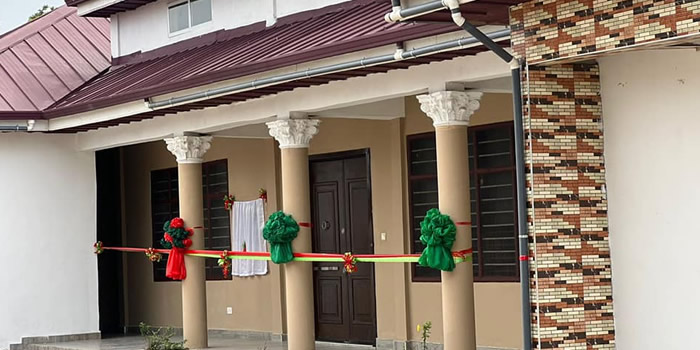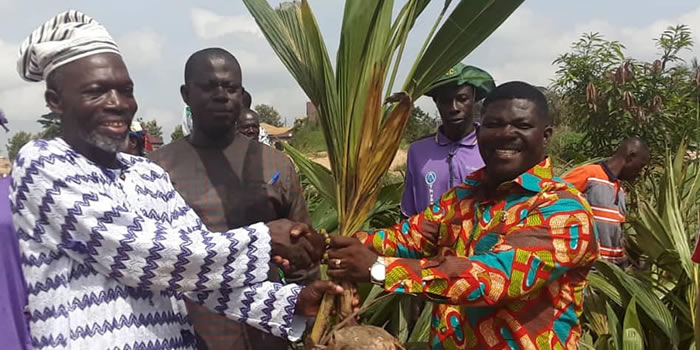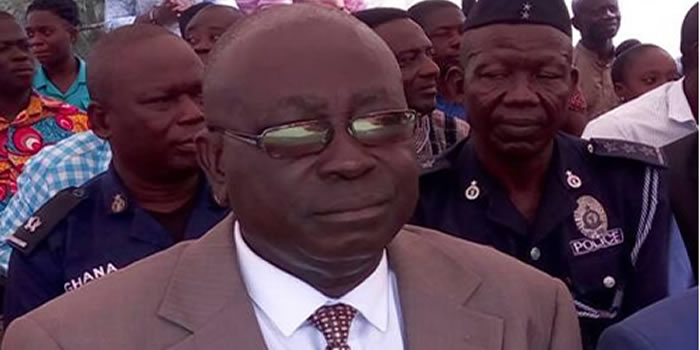

The District is located in the central part of Ashanti Region of Ghana and has an area of about 342.3km being 1.44% of Ashanti Region. The District is bounded by Kumasi Metropolitan Assembly to the South, Sekyere South to the North, Offinso Municipal to the West and Kwabre District to the East.
The location of the district in the central part of Ghana and also, along the highway which runs from the south to the north makes it easily accessible. Its closeness to the second largest city in Ghana, i.e. Kumasi makes it dormitory district as well as high population growth rate and fast growth of settlements.
Climate
The District falls within the Equatorial Climate. It experiences double maxima rainfall regime. Major rainy season is between March and July. Minor season between September and November. Mean annual rainfall ranges between 855mm and 2,160mm. The average number of rainy days for the year is between 110 and 120 days. December to March marks a dry season with high day Temperatures. Mean monthly temperature is about 270c.
The District experiences relative humidity ranging from 90 – 98% during the night and early mornings of the rainy season. Day-time humidity falls below 75% during the harmattan season. The climate conditions favour the cultivation of divers’ variety of cash and food crops which are of tropical nature. Again the relatively high temperatures and sunshine favours the processing of most crops such as cocoa, maize etc.
Vegetation
The vegetation is moist semi-deciduous. The forest consist of three layers namely upper, middle and lower layers. Tree species found in the forest include: sapele, mahogany, odum, wawa etc. The natural vegetation has been reduced to secondary forest. This call for vegonus conservation members to solve both flora and fauna.
Relief
The landscape is a dissected plateau with heights reaching 800m to 1200m above sea level. The plateau forms part of the Mampong-Gambaga scarp. The landscape is predominantly undulating resulting in erosion along the slopes. The undulation nature of the relief of the district makes flow of water easy. Besides the river valleys, there are very few water log areas. This again supports the growth of deep rooted crops/plants the high point serve as observations for people who enjoy sceneries.
Drainage
The District is drained by three main rivers and their tributaries. These are rivers Offin, Oyon and Abanko. Continuous human activities along these rivers and streams have adversely affected their flows. Almost all the rivers experience seasonal flows. The seasonal flow nature of rivers and streams in the district means that they cannot be relied upon for irrigation during the dry season. Again fresh fish production is not well supported.
Geological
The District has two geological formations, namely voltaian and Dahomeyan. The Voltaian formation consists of shale, sandstone, mudstone and lime-stone. The Dahomeyan formation consists of meta-morphic rocks such as gneiss and schist.The mass presence of granite rock in the distinct support quarry industry. This will continue to be a major source of employment and income and so the citizenry must be encouraged to take advantage.
Soils
The soil types consist of Kumasi-Offin Compound Association, Bomso-Offin Association, Jamasi Simple Association, Boamang Simple Association, Bediesi-Sutawa Association and Yaya-Primpimson Association. The Kumasi-Offin Compound Soil is good for tree crops such as citrus, cocoa, coffee and oil-palm. They are also good for food crops like, cocoyam, plantain, cassava and yam. The Boamang Simple Association is good for agriculture but it is highly susceptible to erosion.
The Bediesi-Sutawa Association has high water holding capacity and is suitable for mechanized agriculture. They support crops like maize, yam, legumes, cassava, plantain and groundnuts. The soils are very rich and good for agricultural purposes. The district has been a major source of food supply and cocoa which still has a bright future.
The soils have textured surface horizons in which sandy-loams are common. The lower horizons have slightly heavier textures while the valley bottoms are clayey textured.
Date Created : 11/28/2017 2:54:00 AM












 facebook
facebook
 twitter
twitter
 Youtube
Youtube
 +233 593 831 280
+233 593 831 280 0800 430 430
0800 430 430 GPS: GE-231-4383
GPS: GE-231-4383 info@ghanadistricts.com
info@ghanadistricts.com Box GP1044, Accra, Ghana
Box GP1044, Accra, Ghana